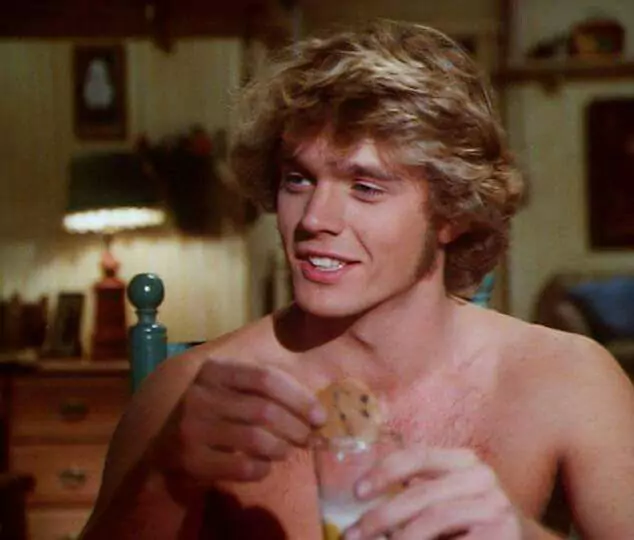Introduction to Playgirl Photos
Playgirl photos have long been a unique and controversial medium celebrated for their bold approach to challenging societal norms. Known for featuring intimate portrayals of male bodies, these images first gained traction in the early 1970s as a provocative response to media dominated by female-centric imagery. At their core, Playgirl photos were about flipping the narrative—ushering in a new era that embraced the expression of male sexuality.
But how did Playgirl photography evolve over the decades? What does its impact look like now, and how has it shaped broader cultural conversations? This blog dives into the past, present, and potential future of Playgirl photos, exploring their cultural significance, diversity, and ethics along the way.
The Cultural Impact of Playgirl Photography
When Playgirl magazine first launched in 1973, it aimed to be a counterpart to publications like Playboy. However, it was more than just a magazine. It became a cultural moment that opened conversations on male vulnerability and attractiveness. For readers, these photos redefined traditional masculinity, presenting men in sensual, empowered, and artistic ways.
Breaking Gender Roles
For decades, mainstream media largely confined men to single-dimensional portrayals—detached, stoic, and powerful in a narrowly defined way. Playgirl photos disrupted these depictions, offering visuals that celebrated male bodies as sources of beauty in their own right. This shift wasn’t just groundbreaking for men. By offering women and queer audiences a space typically denied in mass media, Playgirl photography challenged restrictive gender roles.
Playgirl’s Role in Popular Media
The influence of these photos began to seep into pop culture. Television, movies, and even music videos started featuring well-crafted imagery of the male physique, no doubt inspired by the aesthetic boldness of Playgirl photos. Today, echoes of this cultural shift can still be found in advertising campaigns and entertainment content that openly celebrate body diversity and redefine what it means to market sex appeal.
Towards Inclusivity and Diversity
Making Space for Diversity in Playgirl Photography
While its early years focused primarily on hyper-masculine and conventionally attractive models, Playgirl photography has undergone a noticeable transformation. Critics and supporters alike called for greater representation beyond a specific type of male body, and the industry has begun responding.
Today, Playgirl photos are more likely to showcase a diverse range of body types, skin tones, and identities. By including men of all ages, races, and sexual orientations, this evolution reflects society’s growing emphasis on inclusivity. It’s a promising trend that makes space for more meaningful and relatable depictions of maleness.
Representation Matters
As society becomes more tuned into the importance of representation, Playgirl photography’s impact extends beyond selling magazines or attracting followers. For marginalized men—particularly those who rarely see themselves positively represented in erotic or artistic imagery—these photos can foster confidence, boost self-esteem, and spark conversations about beauty standards.
This expanded narrative ensures Playgirl photos don’t just cater to a niche; they cater to a society that’s constantly redefining how it sees itself.
Navigating the Legal and Ethical Landscape

Protecting Models and Creators
Creating and distributing Playgirl photos comes with its own set of challenges. For professional photographers, ensuring the wellbeing of their models is paramount. Model consent, contractual agreements, and respectful working conditions all form part of the ethical foundation.
Photographers must address key questions during production:
- Were the models’ boundaries respected?
- Was consent obtained and documented clearly?
- Does the content uphold values of respect and inclusion?
When these considerations are ignored, the consequences can harm not only the models involved but the industry itself.
Combating Exploitation in Distribution
Additionally, the digital age has brought its own challenges. Unauthorized sharing and piracy of Playgirl photos remain a significant concern. Photographers and publishers must remain vigilant, leveraging copyright laws and forming policies to combat exploitation while protecting the artistic and professional value of their work.
This is where organizations specializing in rights management play a vital role, educating creators and consumers about the ethics of content creation.
Advice for Aspiring Playgirl Photographers
If you’re an aspiring Playgirl photographer, navigating this challenging but rewarding niche starts with a solid roadmap. Here are some key takeaways for succeeding in the industry while maintaining integrity and artistic creativity.
1. Develop Your Distinct Aesthetic
Playgirl photography is an art form. To stand out, cultivate a personal style that reflects both your creative voice and a modern understanding of masculine beauty. Study composition, lighting, and the use of color—the right visual cues can elevate your work.
2. Build Trust with Your Models
Trust is pivotal for this kind of photography, especially considering its intimate nature. Take time to build rapport with your models and ensure consent at every stage of your collaboration. A respectful photographer-model relationship can make your subjects feel at ease, resulting in images both authentic and powerful.
3. Stay Updated on Industry Trends
With Playgirl photos now becoming increasingly diverse, understanding current expectations or themes is essential. Pay attention to trends like inclusivity or artistic storytelling, but don’t be afraid to push creative boundaries.
The Timeless Relevance of Playgirl Photography
Playgirl photos remain an invaluable part of cultural history, shaping both how masculinity is portrayed and how society interacts with sexuality as a whole. Decades after their inception, these images continue to spark bold conversations while carving new paths for artistic expression.
For aspiring photographers or enthusiasts looking to engage with this fascinating medium, there’s plenty of uncharted territory to explore. Whether pushing boundaries, celebrating diversity, or crafting respectful narratives, Playgirl photography offers opportunities not just to reflect cultural values but to help redefine them for the better.
Conclusion
In conclusion, Playgirl photography has played a pivotal role in challenging and reshaping perceptions of masculinity over the years. Its journey from showcasing hyper-masculine imagery to embracing diverse representations marks a significant cultural evolution. By promoting inclusivity and providing a platform for varied expressions of male beauty, Playgirl photos continue to influence both the media and societal standards. This transformative medium not only opens dialogues about gender roles and body positivity but also empowers individuals by offering more relatable and inclusive depictions. As it continues to evolve, Playgirl photography will likely maintain its relevance and impact, serving as a powerful tool for reflection and change within the ever-shifting landscape of contemporary culture.




